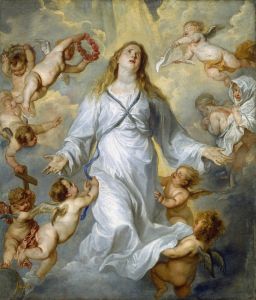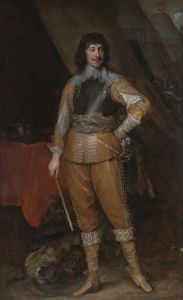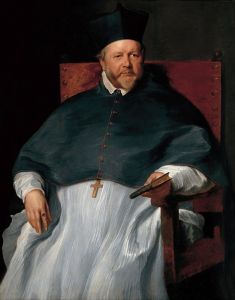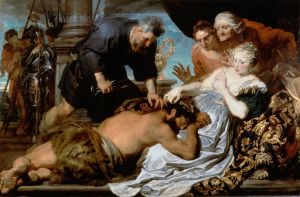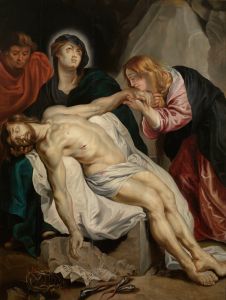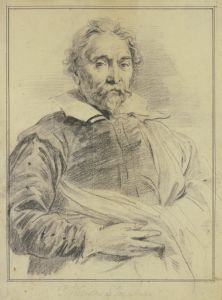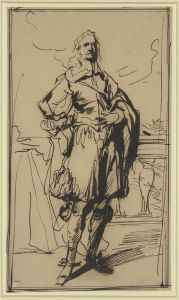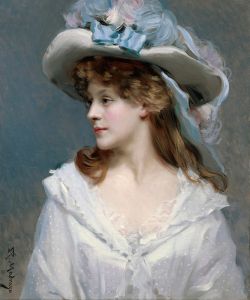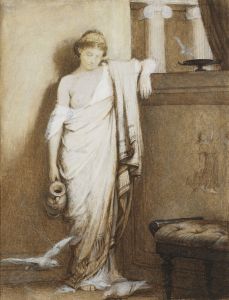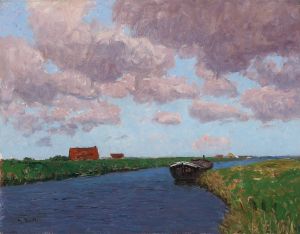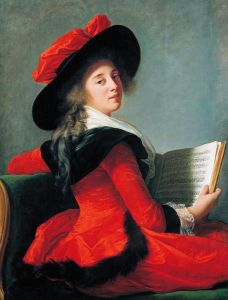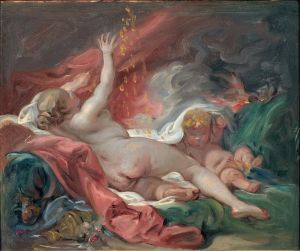
Isabella Brant
A hand-painted replica of Anthony van Dyck’s masterpiece Isabella Brant, meticulously crafted by professional artists to capture the true essence of the original. Each piece is created with museum-quality canvas and rare mineral pigments, carefully painted by experienced artists with delicate brushstrokes and rich, layered colors to perfectly recreate the texture of the original artwork. Unlike machine-printed reproductions, this hand-painted version brings the painting to life, infused with the artist’s emotions and skill in every stroke. Whether for personal collection or home decoration, it instantly elevates the artistic atmosphere of any space.
Isabella Brant by Anthony van Dyck is a portrait painting created by the renowned Flemish Baroque artist Anthony van Dyck. The painting depicts Isabella Brant, who was the first wife of Peter Paul Rubens, another prominent Flemish painter of the Baroque era. Van Dyck, known for his sophisticated and elegant portraiture, was a leading artist of his time and a student of Rubens, which makes this portrait particularly significant in the context of art history.
The painting is believed to have been completed around 1621, during a period when van Dyck was heavily influenced by Rubens' style. This influence is evident in the composition and the use of color, as well as in the detailed rendering of textures and fabrics. Van Dyck's portraits are characterized by their graceful depiction of the human figure and their ability to convey the personality and status of the sitter, and this work is no exception.
In the portrait, Isabella Brant is presented with a sense of poise and dignity. She is dressed in elegant attire, which reflects her status and the fashion of the early 17th century. The attention to detail in her clothing and the delicate rendering of her features are typical of van Dyck's meticulous approach to portraiture. The background is relatively simple, which serves to highlight the figure of Isabella Brant and draw attention to her expression and posture.
Isabella Brant was an important figure in the social and cultural life of Antwerp, where she and Rubens lived. Her marriage to Rubens in 1609 was a significant event, and she became a muse and model for many of his works. The portrait by van Dyck not only captures her likeness but also serves as a testament to her role in the artistic community of the time.
Van Dyck's relationship with Rubens was both that of a student and a colleague. After spending time in Rubens' studio, van Dyck developed his own distinctive style, which would later earn him international acclaim, particularly in England where he became the leading court painter. The portrait of Isabella Brant is an example of van Dyck's early work, showcasing his emerging talent and the influence of his mentor.
The painting is part of the collection of the National Gallery of Art in Washington, D.C., where it is appreciated for its artistic merit and historical significance. It provides insight into the world of 17th-century Flemish art and the interconnected lives of its artists. Through this portrait, viewers can appreciate the skill of van Dyck and the enduring legacy of the Baroque period.
Overall, Isabella Brant by Anthony van Dyck is a masterful example of Baroque portraiture, reflecting the artist's technical skill and the cultural milieu of his time. It remains an important work for both its artistic qualities and its connection to the notable figures of the Flemish Baroque.






